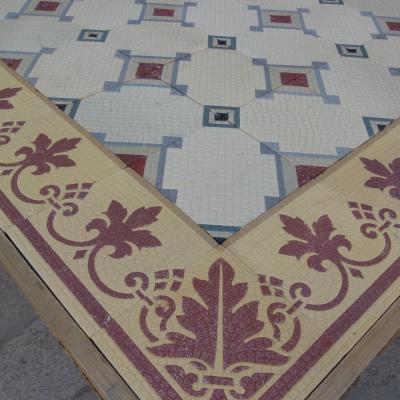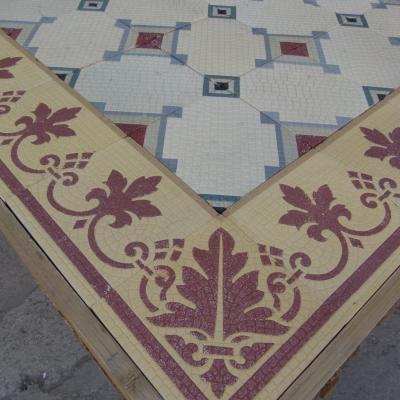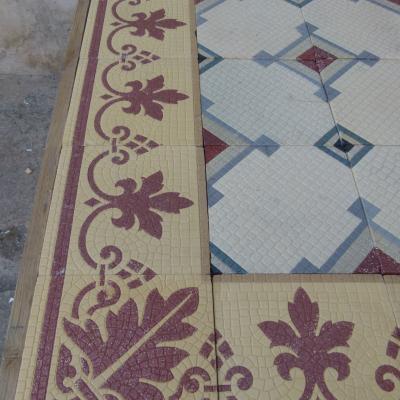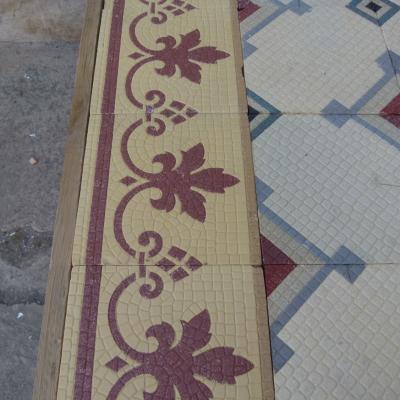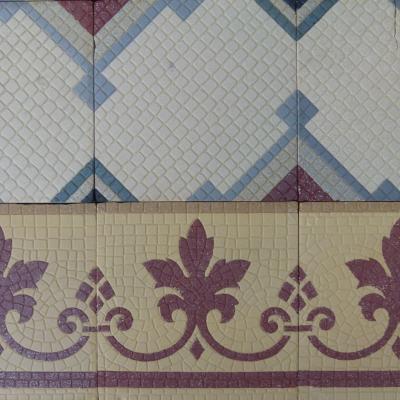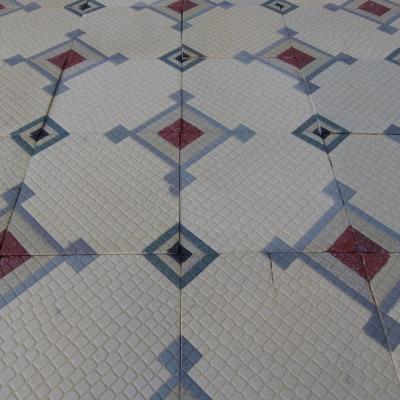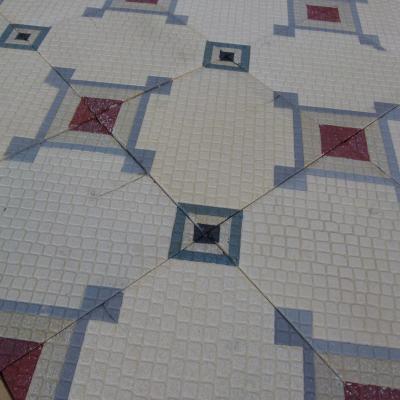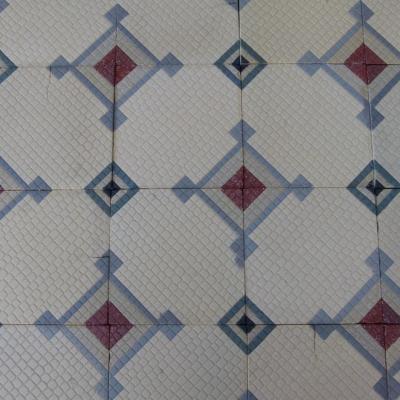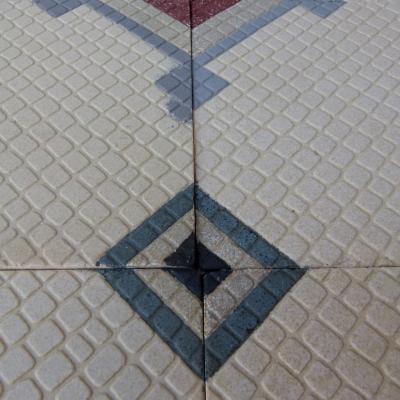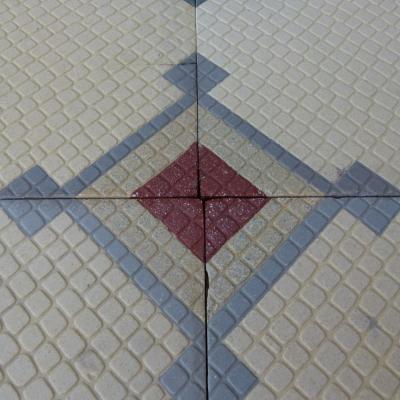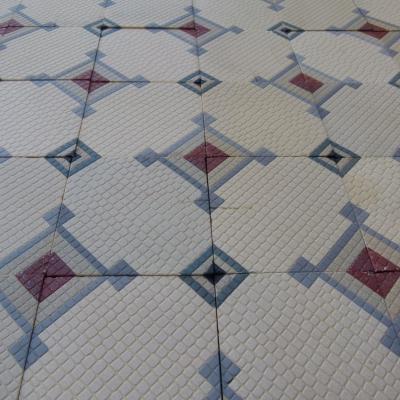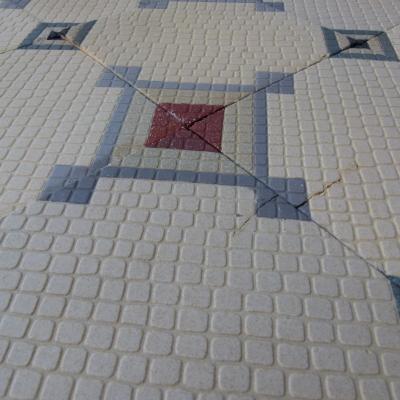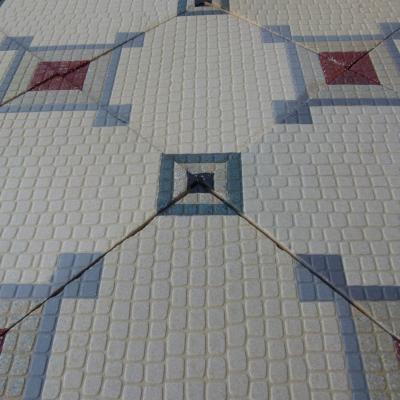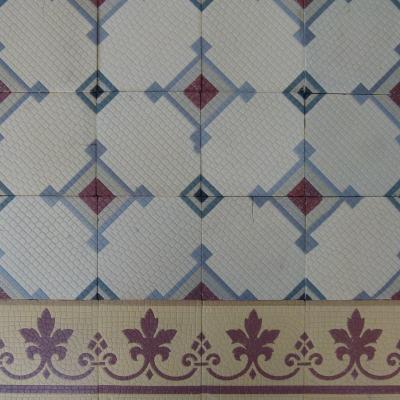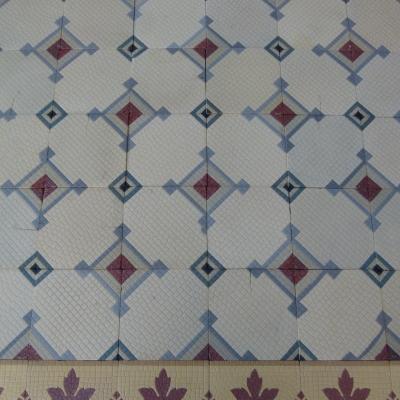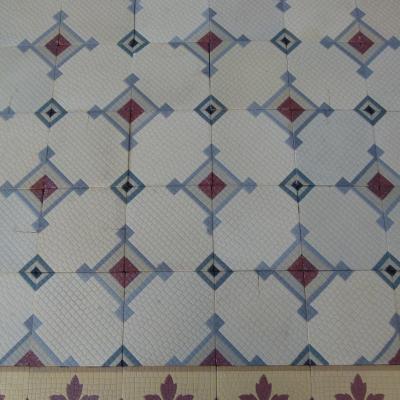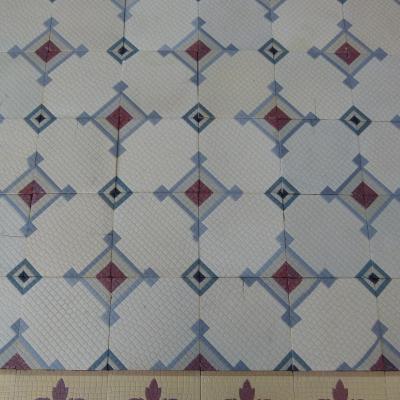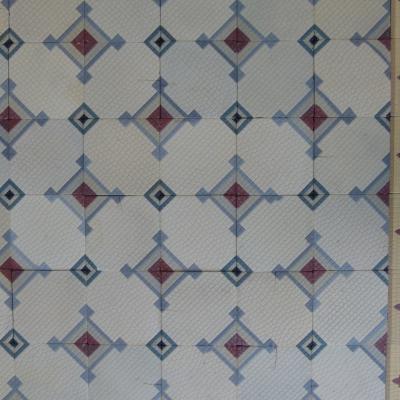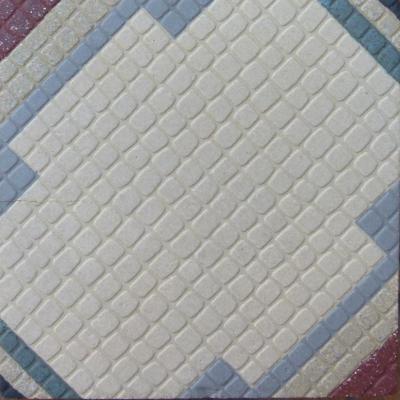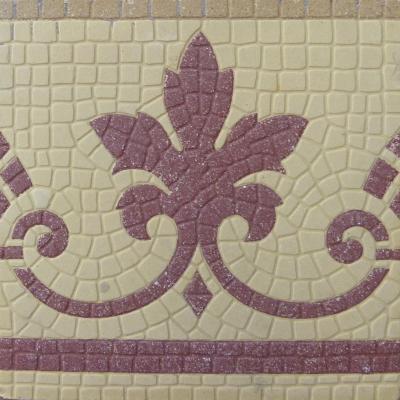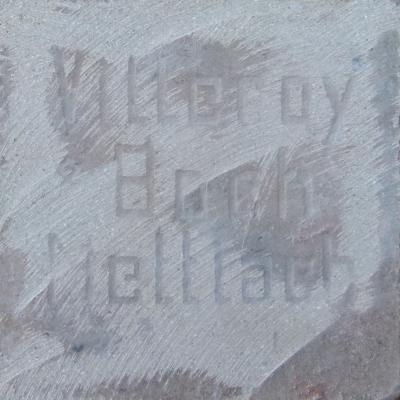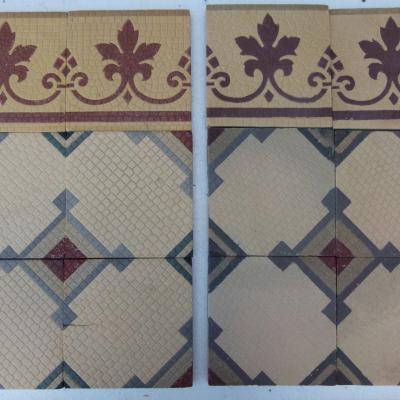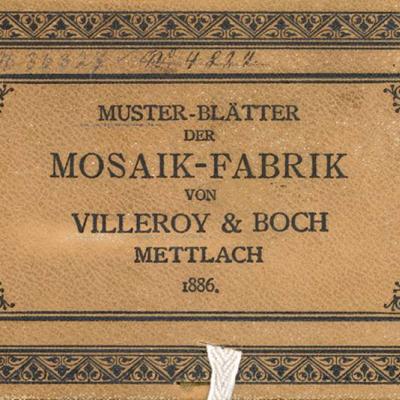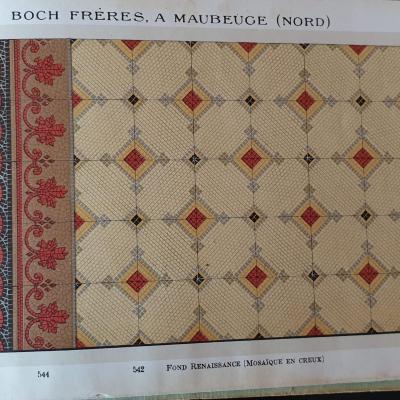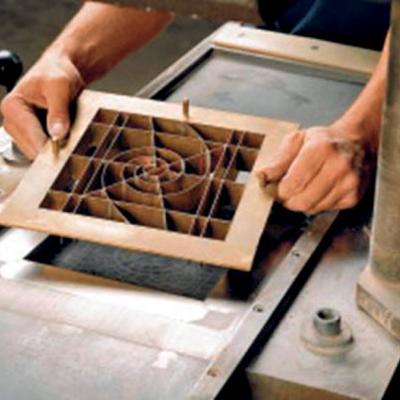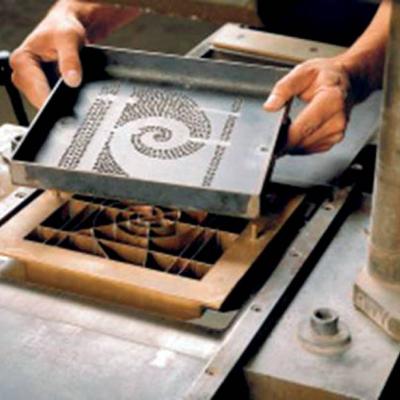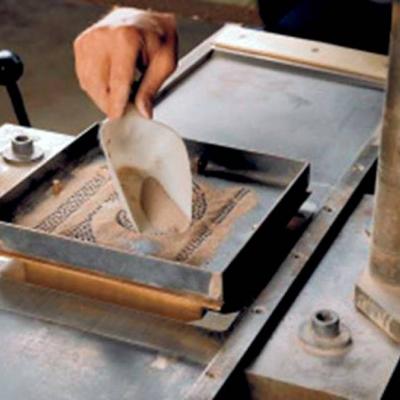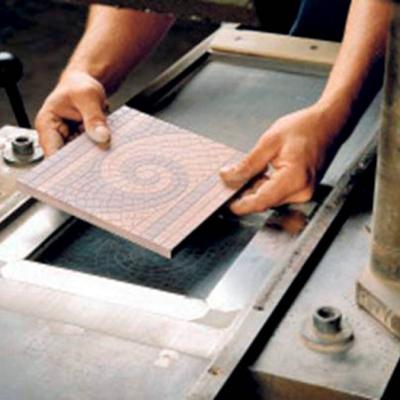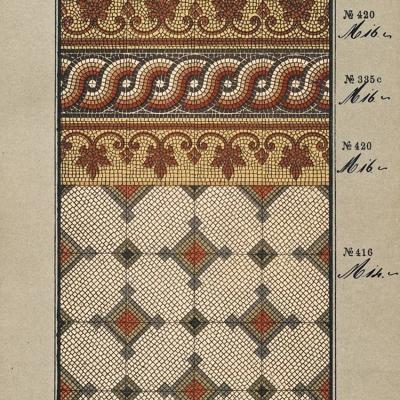A 12m2 handmade latticed ceramic floor with original borders c.1886-1900
One we have reclaimed twice now in 16 years of trading and now fully restored to its original beauty, a handmade ceramic floor of superb quality, manufactured in Mettlach, Germany. The floor appears in both the Villeroy & Boch Mettlach catalogue of 1886 as well as in period Ceramiques Carrelages Boch Freres, Maubeuge catalogues. We also have the Boch Freres, Maubeuge floor available with a link below to its details.
The design in minimalist using faux cabochons to link the main cereal coloured field tiles and a vegetal themed border frames the floor. The tiles are latticed on their sufaces.
These 17cm square tiles, over 17mm thick and weighing 1.25kgs each have cleaned beautifully revealing quality, heritage tiles. Included in the gallery are four photos showing the slow, manual production of the tiles that would have taken place at the factory. In this instance, the loading the coloured slips into the tile mould before pressing under several tonnes of weight and then subsequent firing.
Total surface area:- 12.5m2 / 135sq ft.
Being a highly fired tile they can be laid inside or outside of the home but with the additional advantage of having a relief lattice surface they lend themselves to laying on a patio, in a summer house, a garden path or entrance path.
Tile quantities (give or take one or two):-
Field tiles – 320 - 9.2m2 / 100 sq ft.
Large border tiles – 100 plus 4 corner tiles - 3m2 / 32 sq ft or 17.7 linear metres / 58 linear feet
plus some free tile rejects to use as offcuts
The sister floor, manufactured by Boch Freres, Maubeuge, is in a similar palette, is also available and details can be found if you click here We have included a photo in the gallery of 6 tiles from both floors to show their slightly different design and palette; to the left the Villeroy Boch Mettlach and to the right the Boch Freres Maubeuge. Integration of the two floors would be possible as the tiles are the same size.
Tile size, thickness and tones
Antique tiles were most commonly made in single or two tile moulds. Before current computer automation methods their moulds were made my hand and the colour slips mixed by eye. Kiln temperatures could also be variable, as could the firing time. The result is that often tiles display subtle size and thickness variations and there can be tonal variations in colours, owing to the slip mixing and/or firing time. All of this makes these handmade tiles unique and adds to their charm. Some floors display their subtle variations in size and tones, some not, but when photographing we always take a random section of the floor so that it is representative of the whole. A tiler should always dry lay a section of the tiles to familiarise himself with them before starting to fix lay.
Condition
All of our floors go through rigorous quality control during the restoration process. We include tiles which have groutable small chips and edge nibbles, expected of tiles more than 100 years old , but include for free any rejects, which the tiler can then use for offcuts. The photographs in the gallery are of a c.1.5m2 / 16 sq ft.randomly taken sample of the larger floor and therefore representative of the whole floors condition and patina.
Can we help?
If you can provide a technical drawing, or a simple sketch with key dimensions, we are happy to assist in evaluating and recommending the best layout of the floor in your area of choice..
CE264



